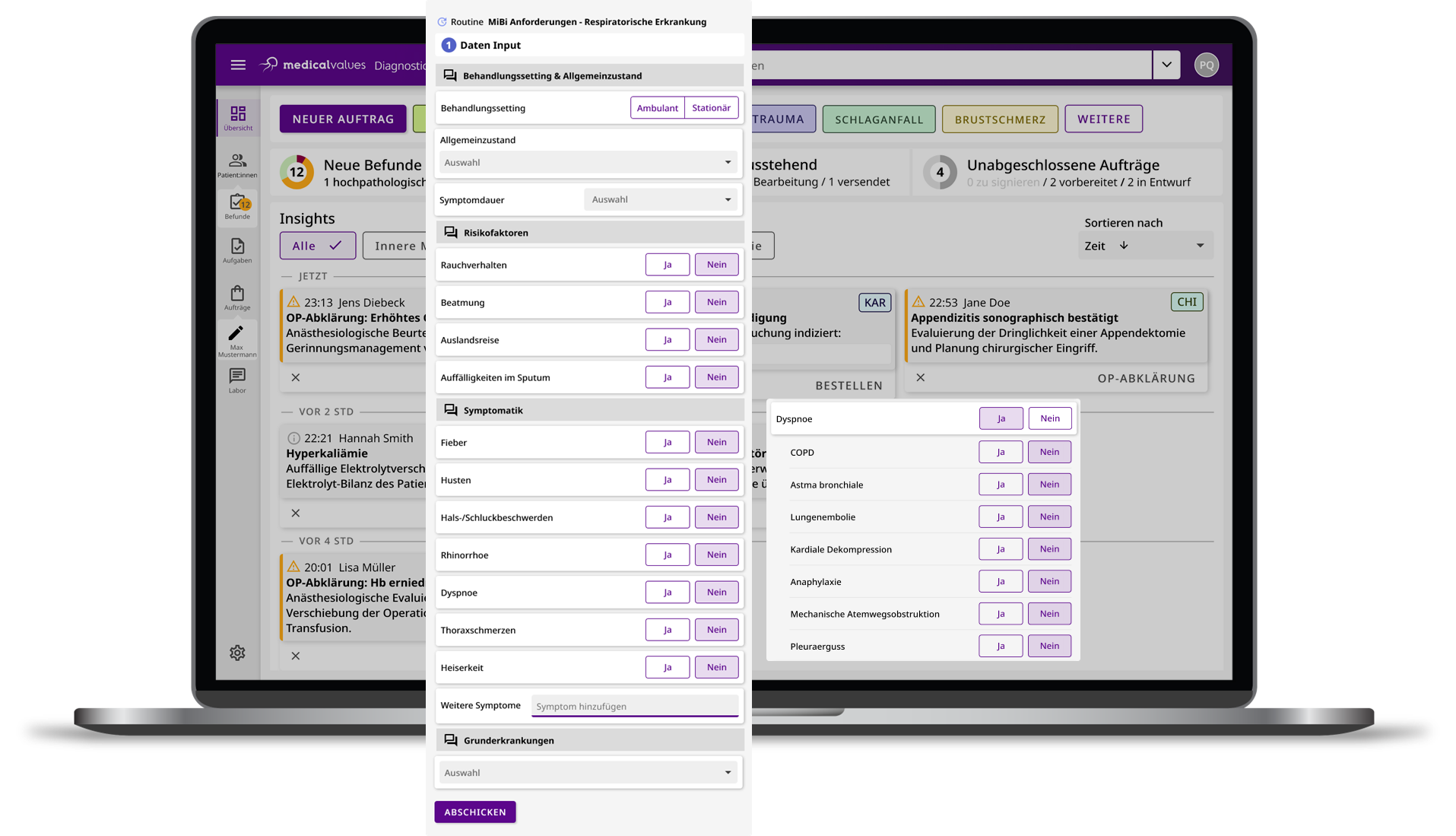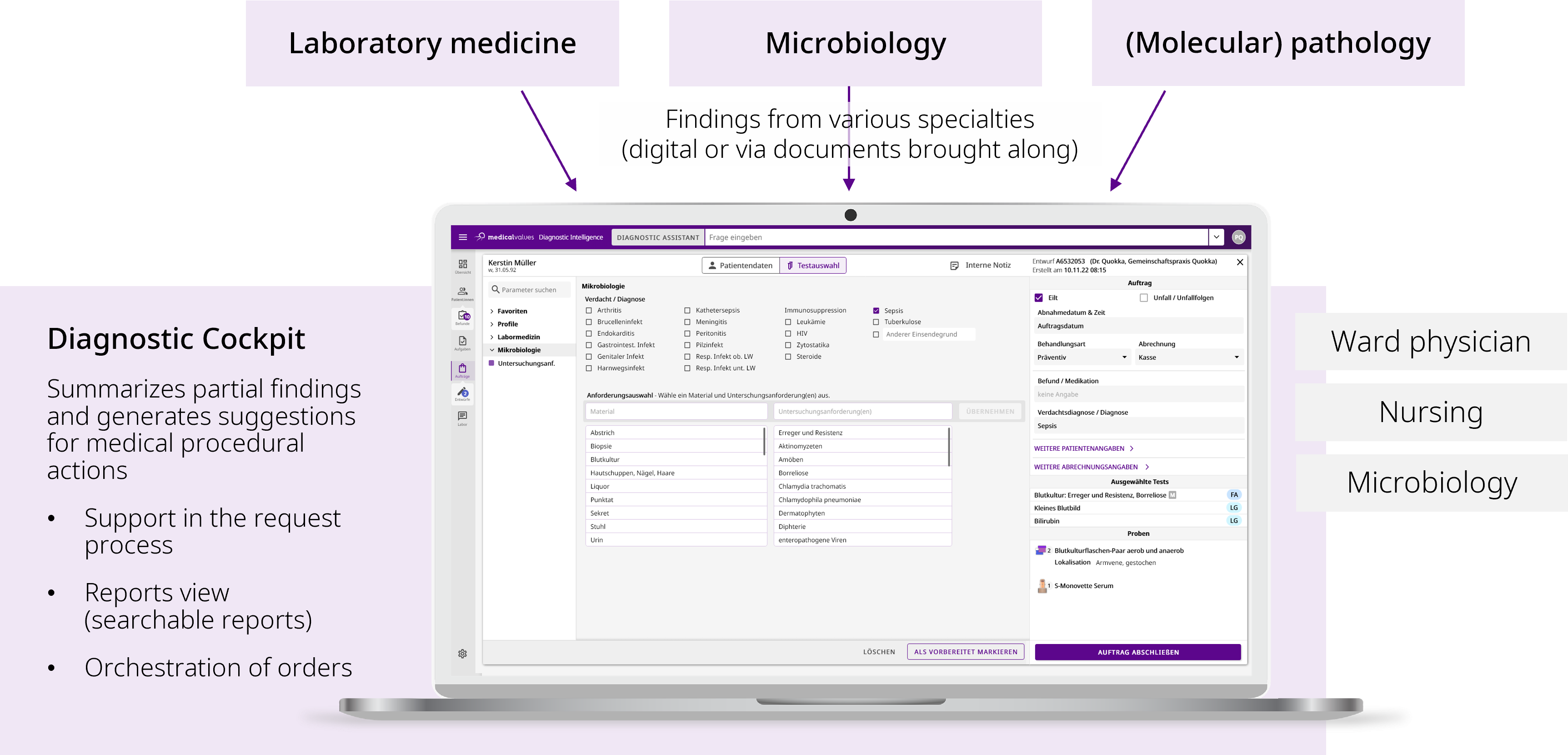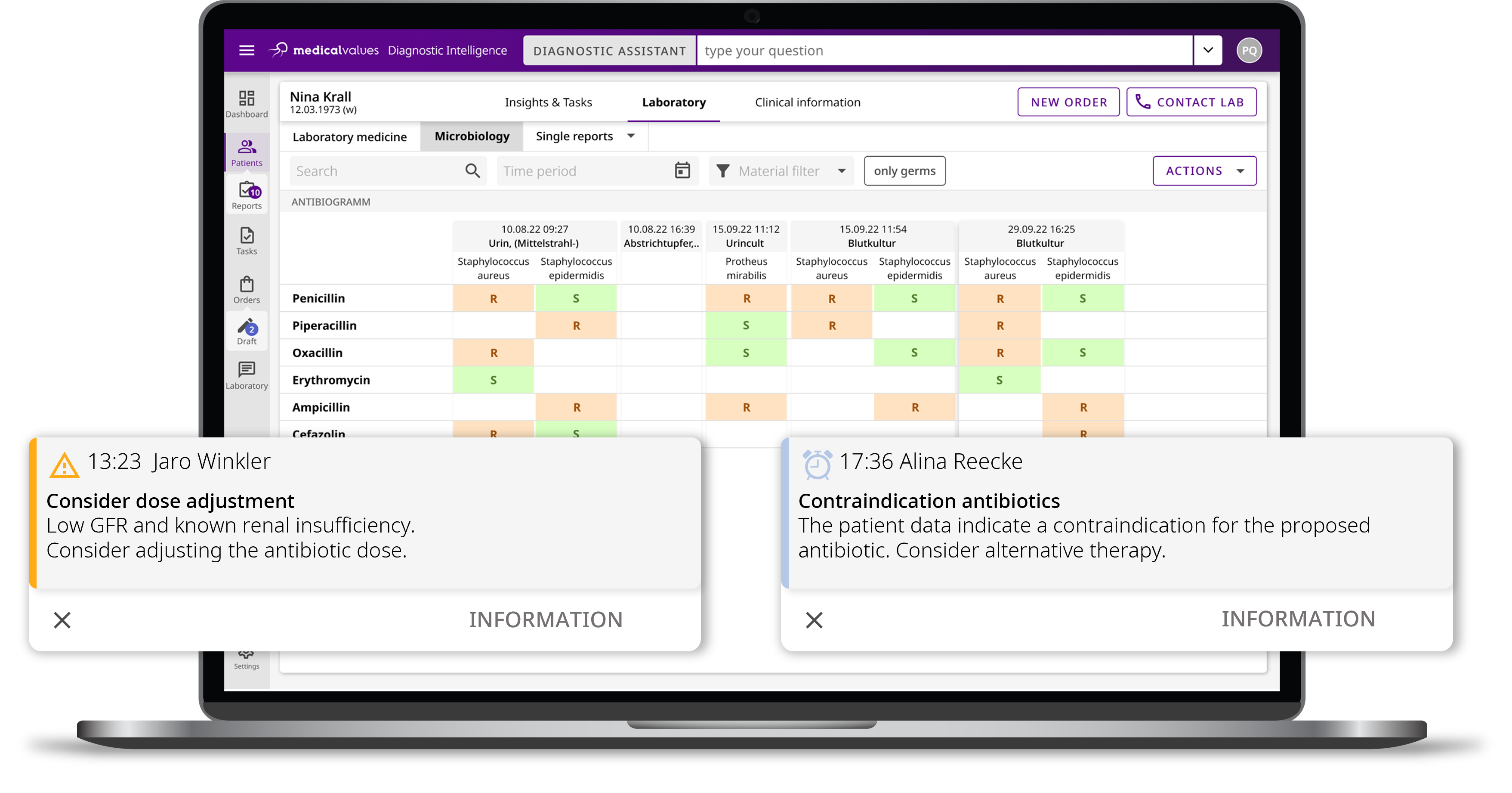In light of pandemics, climate change, and antibiotic resistance, the clinical-microbiological laboratory plays a crucial role in optimizing the management of infectious diseases and monitoring local and global epidemiology. AI can help fulfill this critical role more rapidly and economically: through rational sampling, advanced automation, and efficient use of new technologies. Let’s take a look at some examples that we at medicalvalues are addressing in practice with our customers.
Artificial Intelligence in Microbiological Preanalytics
A patient visits the clinic or emergency room with fever, cough, and a sore throat. AI support can already begin here, for example, with a dynamic questionnaire to narrow down diagnostic recommendations. Master data and other existing information can be conveniently retrieved from the hospital or practice information system.
By referencing standard operating procedures (SOPs), guidelines, literature, or even current information on global and local epidemiology, the AI assistance system can suggest specific diagnostic measures. It provides medical staff with precise instructions on how and when to collect samples and how to store and transport them. This effectively minimizes preanalytical errors, which are particularly frequent in microbiology.

AI in Complex Microbiological Diagnosis
Three months of fever, night sweats, fatigue, occasional headaches, weight loss, a recent trip to Southeast Asia with insect bites, and an episode of diarrhea—such cases are no longer rare in today’s global society. Possible differential diagnoses range from bacterial, viral, parasitic, and fungal infections to autoimmune diseases, malignancies, or endocrine disorders.
An AI assistance system can support integrated diagnostics in such complex situations in several ways:
Literature Research and Evidence-Based Recommendations: AI can quickly and efficiently process extensive and up-to-date literature, extracting relevant insights tailored to the patient’s individual situation.
Creating and Prioritizing a Differential Diagnostic List: Based on symptoms and findings, AI can generate a list of possible diagnoses and prioritize further diagnostics, offering suggestions for additional questions or tests in a meaningful sequence.
Data Analysis and Pattern Recognition: AI can analyze large volumes of diverse patient data, including lab results, history, symptoms, and imaging, to identify patterns that point to specific diagnoses. It can account for cross-reactions or coinfections, factoring in rare and tropical diseases based on the patient’s symptoms and travel history.
Communication and Documentation: Detailed reports summarizing clinical findings, conducted tests, proposed diagnoses, and treatments can be created. Specialized reports focusing on particular areas can be quickly generated for multidisciplinary consultations. AI can also translate complex medical information into patient-friendly formats.

Antibiotic Stewardship: AI for Therapy and Monitoring
A 60-year-old woman is admitted to the ER with high fever, chills, and a severe cough. She recently stayed in a foreign hospital for pneumonia treatment and received multiple antibiotics, including a broad-spectrum one. Treating her without knowledge of the pathogens and their resistance profiles risks ineffective antibiotics and worsens resistance issues.
AI can help here by considering all relevant factors under high time pressure, such as resistance patterns abroad, likely applied guidelines, comorbidities, liver and kidney function, and drug interactions.

Even after the initial treatment decision, AI can continue to support care by collecting data points to create prognostic models. These models predict disease progression, enabling early identification of changes that require therapy adjustments. This ensures the most effective antibiotics are used while minimizing resistance risks.
Prevention: Using AI to Prevent Germ-Related Complications?
A 68-year-old dog owner with a history of diabetes and hypertension is scheduled for elective hip replacement surgery. AI could identify that her condition poses a heightened risk for complications caused by multi-drug-resistant pathogens. Pre-surgery screening might uncover a methicillin-resistant Staphylococcus aureus (MRSA) infection.
Should the surgery be postponed for MRSA eradication? AI could predict the likelihood of eradication success based on complex factors, aiding decision-making. In this case, eradication fails, but knowing this, optimal hygiene measures can be implemented. AI supports identifying appropriate interventions, ranging from antibiotic prophylaxis and enhanced hygiene protocols to closely monitored postoperative care.
These examples show how AI already improves accuracy and efficiency in microbiological diagnostics, contributing to better patient care. What are your experiences? Are there challenges you’ve encountered without solutions yet? Our team at medicalvalues, consisting of IT experts and physicians, is always eager for new challenges.




